Delhi NCR-based Inshorts is said to be testing a new feature within its app akin to X or LinkedIn and is looking to rope in influencers for user-generated original content
The app is also aggregating social media posts by individual users, where publishing unverified claims from social media platforms as news could lead to legal trouble
The blurring of the lines between news and user-generated content is in contravention to the IT Act, and Inshorts runs the risk of running afoul of the guidelines set for digital media intermediaries
Last week, news aggregator Inshorts
The company’s statement said Purkayastha would lead the company into “the next phase of growth” but the route is certainly not going to be scenic, as Inshorts will have to take a number of tough decisions along the way.
That’s because, in the background, the Delhi NCR-based company itself is morphing from being a news aggregator to a full-fledged social media content platform by roping in influencers and creators. With this Inshorts, which made a name as a news aggregator, risks losing a part of this core identity.
The app is also aggregating social media posts by individual users, where publishing unverified claims from social media platforms as news could lead to legal trouble.
According to sources close to the company, Inshorts is testing a new feature within its app akin to X (FKA Twitter) or LinkedIn, aimed at original content generated by some of the biggest influencers in India. The app is said to be luring top influencers and podcasters from LinkedIn, X and YouTube for the launch.
With this, Inshorts is directly taking on the likes of Sharechat, Sharechat’s Moj (short video), Dailyhunt’s Josh, Inmobi’s Roposo and others in the social media space, not to mention X, Instagram, Snapchat, YouTube and other behemoths.
This is an incredibly tight field for a new app with a similar offering, and moreover we have seen the Indian social media thesis has not resulted in monetisation at scale. The examples of Sharechat and others have been well reported.
The First Decade Of Inshorts
It all started as a Facebook page in 2013. Iqubal, an IIT Delhi third year student, dropped out to startup with two fellow IIT students. The Facebook page showed a snappy summary of the major news stories of the day and its success spurred the launch of Inshorts or News In Shorts.
The first funding round came three months later as Inshorts had seemingly struck a goldmine with its product idea, which was entirely new for the Indian market.
The app grew in popularity and so did the valuation of the company, which was around $550 Mn at the last funding round of $60 Mn which came in July 2021. The startup is backed by the likes of Lee Fixel’s Addition, Tiger Global, SIG, A91 Partners and Tanglin Venture Partners.
According to Statista, Google News currently occupies 55% of the market share in the news-aggregator space, followed by Dailyhunt (35%) and Inshorts (17%).
Amid this growth, it’s hard to deny that Iqubal is the face of the company in many regards.
The 31-year-old former CEO’s public image is undoubtedly helped by his appearance on Shark Tank India, where he is the youngest of the celebrity investors.
Inshorts is pretty much one of the standout examples of the Indian startup ecosystem’s growth. The app primarily targetted users in the age group of 20-35 years who found it more convenient to read short-form news content on the go, rather than online articles or print media.
In a recent interaction with podcaster and angel investor Raj Shamani, Iqubal said that Inshorts and its sister app Public (hyperlocal user-generated video news) content have a combined base of 10 Mn daily active users.
But getting there has not come cheap. Inshorts reported a 3X increase in losses to INR 309 Cr with operating revenue rising by nearly 9% to INR 147 Cr.
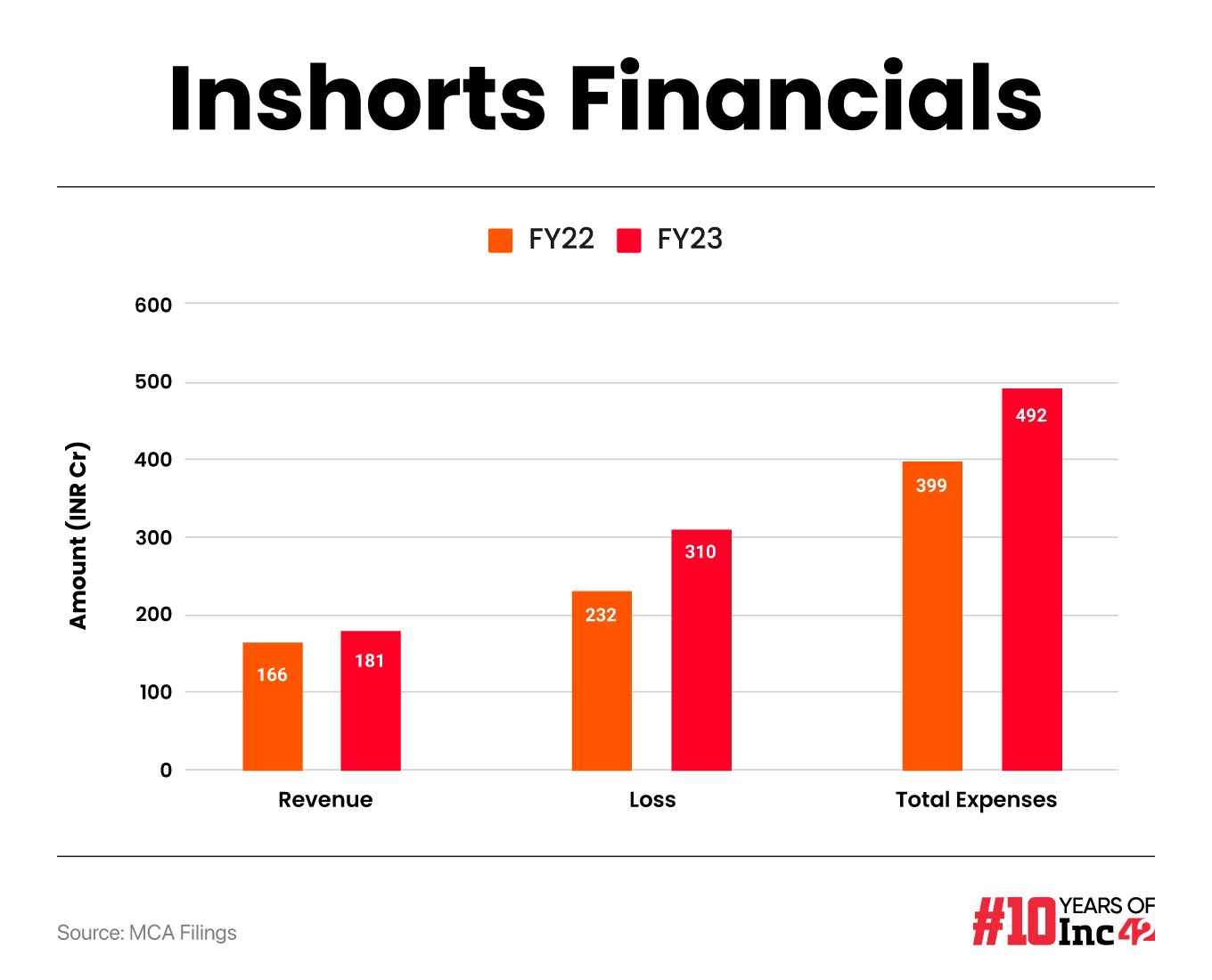
Dailyhunt, Inshorts’ closest rival in the news aggregation space, reported a net loss of INR 1,907 Cr in FY23. However, Dailyhunt’s parent company VerSe Innovation cut its losses by 25% as revenue grew by as much as 51% to INR 1,456 Cr.
In the case of VerSe, it made a string of acquisitions to strengthen its news and short video platforms. Dailyhunt, as per sources, may acquire microblogging platform Koo soon. It also has a majority stake in online news portal OneIndia and other hyperlocal content platforms.
Inshorts, on the other hand, has not made any major acquisitions. It has relied on pure-play digital advertising, word of mouth, distribution deals with smartphone OEMs and also built a separate video product called Public in house.
Unlike Dailyhunt’s acquisitions, which brought in inorganic user and influencer growth, Inshorts is trying to build something from scratch. And at the same time, it’s looking to do so without burning too much cash.
Plus, becoming a social media intermediary will also come with its fair share of regulatory headaches for Inshorts. Even in its current state, the model of aggregating news and social media content means the startup is running the risk of violating sections of the Information Technology Act, 2000.
The New Inshorts: News + Social Media
So far, Inshorts has primarily operated as a news aggregator, posting 60-word summaries of the important stories of the day. News aggregators are governed by the guidelines and Digital Media Ethics Code under the IT Rules, 2021.
Which brings us to the problem around aggregating social media content, such as posts from X, LinkedIn and other platforms. These are part of Inshorts’ regular news feed, even though in many cases these are opinions of individuals.
As per the definitions under the rules, “Publisher of news and current affairs content’ means an online paper, news portal, news aggregator, news agency and such other entity called by whatever name, which is functionally similar to publishers of news and current affairs content but shall not include newspapers, replica e-papers of the newspaper and any individual or user who is not transmitting content in the course of systematic business, professional or commercial activity”.
The definition clearly mentions that individuals who are not disseminating information as a business cannot be classified as publishers.
For instance, this post referencing an opinion stated by Deepak Shenoy, founder of SEBI-registered portfolio adviser Capital Mind. Swiping left to go to the source, takes the user to X, where we can see that Shenoy is commenting on a Reuters report.
There’s no mention on Inshorts about the Reuters article on the gold repatriation. Instead, Inshorts’ post makes it look like a statement by Shenoy. Plus, the post on Inshorts itself contains language that’s either modified or edited, when compared to the original post on X.

Given the fact that social media posts are routinely deleted, edited or even taken down after fact-checks, Inshorts is running the risk of carrying outdated information or misinformation when aggregating social media posts.
Over the past few weeks, Inc42 noted several posts on Inshorts that were marked as news but took us to social media platforms instead of verified news publishers.
Worryingly, the aggregated social media content is not labelled as user-generated content from other platforms, but is part of the regular ‘news’ feed, which is blurring the lines between the opinions of individual social media users and publishers
It must be noted that the Digital Media Ethics Code has been challenged by media groups as well as individual publishers for infringing on the freedom of expression. And while many of these legal challenges have seen interim stays in the past couple of years from the high courts of Delhi, Bombay, Calcutta, Karnataka, Kerala, Orissa and Madras, the final verdict is still pending.
In late March 2024 for instance, the Supreme Court transferred the multiple petitions challenging the IT (Intermediary Guidelines and Digital Media Ethics Code) Rules, 2021 to the Delhi High Court.
“The solution could be labelling these social media posts as “user-generated content”, and not simply as news,” a Linkedln creator who was approached by Inshorts told us.
As per Section 3(1)(B)(v) of the contentious IT Rules, 2021, intermediaries need to make reasonable efforts to not display or store information that “deceives or misleads the addressee about the origin of the message or knowingly and intentionally communicates any misinformation or information which is patently false and untrue or misleading in nature”.
With social media posts of individual users being shown as news, Inshorts is running the risk of displaying misleading information, since individual user posts could carry misinformation or half-truths.
Focus Turns To Influencer Content
Further, besides publishing news snippets, Inshorts also hosts content created by social media influencers on other platforms such as YouTube or Linkedin. This content is being branded as Shorts.
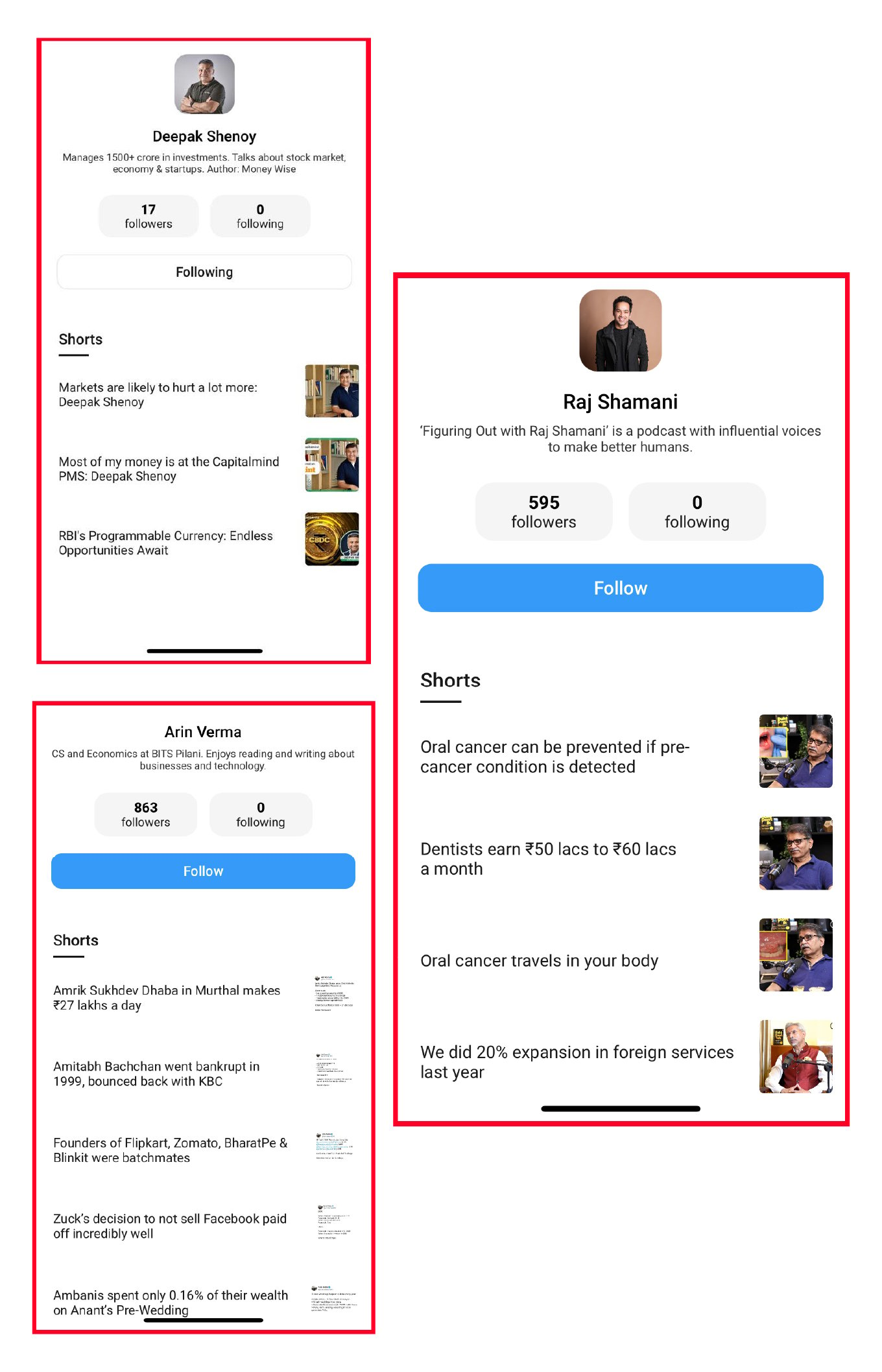
Sources privy to the development told us that Inshorts is trying to rope in major influencers from LinkedIn, X and other platforms as well as popular podcasters and is likely to have an in-app profile for their social media content with follow functionality for other users.
This is akin to the model followed by X or LinkedIn. However the key concern is whether a “news aggregator” as per Indian law can also publish unverified claims and posts on social media and label them as news, or show these posts in the very same app which claims to be a news app.
Further, we have also seen posts on LinkedIn about Inshorts’ efforts to bring in creators for collaborations.
It was not immediately clear whether Inshorts is also paying influencers to post content on the platform or whether it is just looking to serve its 10 Mn users through these influencers.
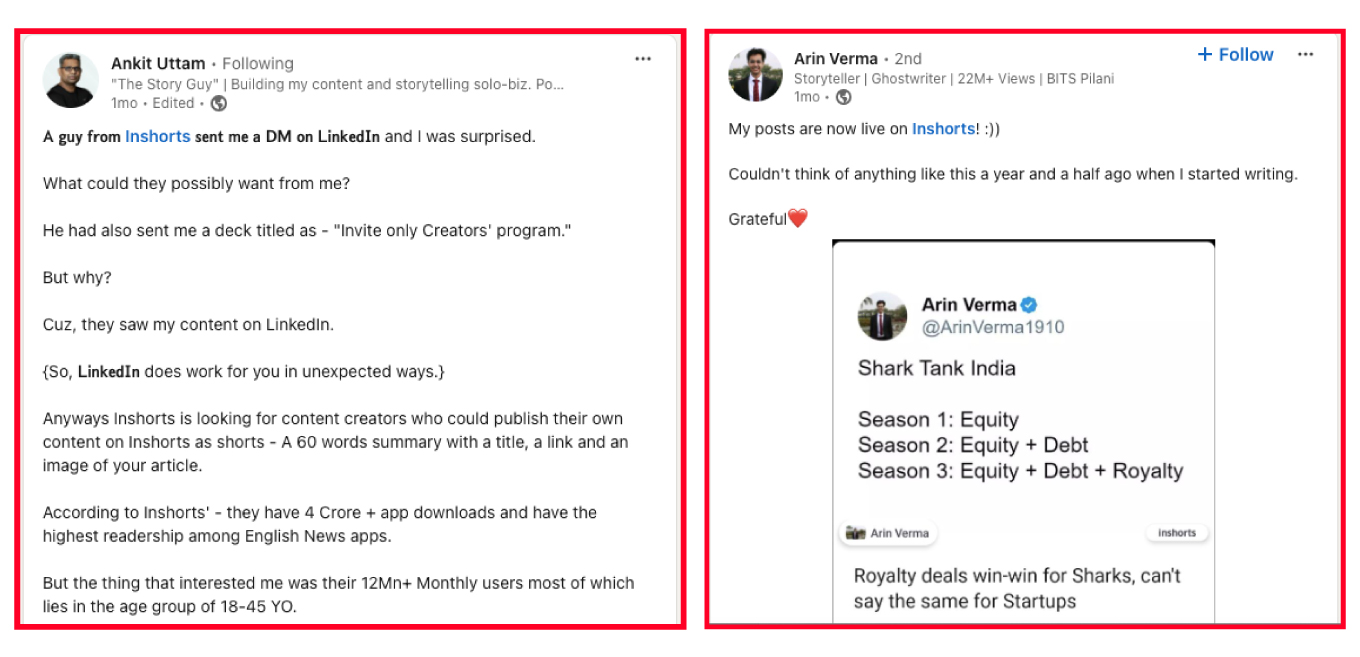
Inc42’s detailed questionnaire to Inshorts remained unanswered till the time of publishing. Our report will be updated as and when Inshorts responds.
The Tiger Global-backed startup is said to be testing various monetisation models in addition to advertising and branded content channels for influencers.
This is also a different approach from the current news aggregation model at Inshorts where it has partnerships with publishers to aggregate their content.
Industry sources say that large media houses are terminating partnerships with news aggregators such as Inshorts, and have revised their payout terms as they look to cut costs. This greatly explains why Inshorts is trying an influencer-driven platform rather than continuing to pay publishers.
Who’s Moderating The Content?
Of course, the pivot to quasi-social media comes with concerns around data privacy, copyrighted content, moderation of content and misinformation.
Fake news is already a major concern and publishing content without clear classification as news or user generated would just add to online misinformation.
“Even if these models are in beta mode, Inshorts already has a huge readership which could perceive simple social media posts as news posts and this could invite regulatory action,” a senior media activist told us.
As the news aggregator tries to grow through influencer-driven user onboarding, it will have to tackle the challenge of fact-checking content being dished out as “news”.
We have noticed several instances of social media posts and content being aggregated as news on Inshorts.
For now, concerns about fake news, misinformation and clickbait are a big challenge for the company and compromise the news aspect of Inshorts.
User Retention, But At What Cost?
Currently, advertising accounts for more than 95% of Inshorts revenues. Influencers bring in users who in turn bring in the advertisers. Further, Inshorts also earns money through branded content partnerships.
But user growth has slowed down. Inshorts’ monthly downloads have fallen 35% from September 2023 to November 2023, before rising by 18 % in February 2024.
It sees an average of 3.1 Lakh downloads per month, as per Similarweb. On the other hand, Dailyhunt sees something like 13 Lakh downloads per month, 4X higher than Inshorts.
Iqubal had earlier said that branded content is a small part of Inshorts’ business, compared to the volume of non-branded news articles. He also said that the platform tries to stick to facts even while publishing sponsored content.
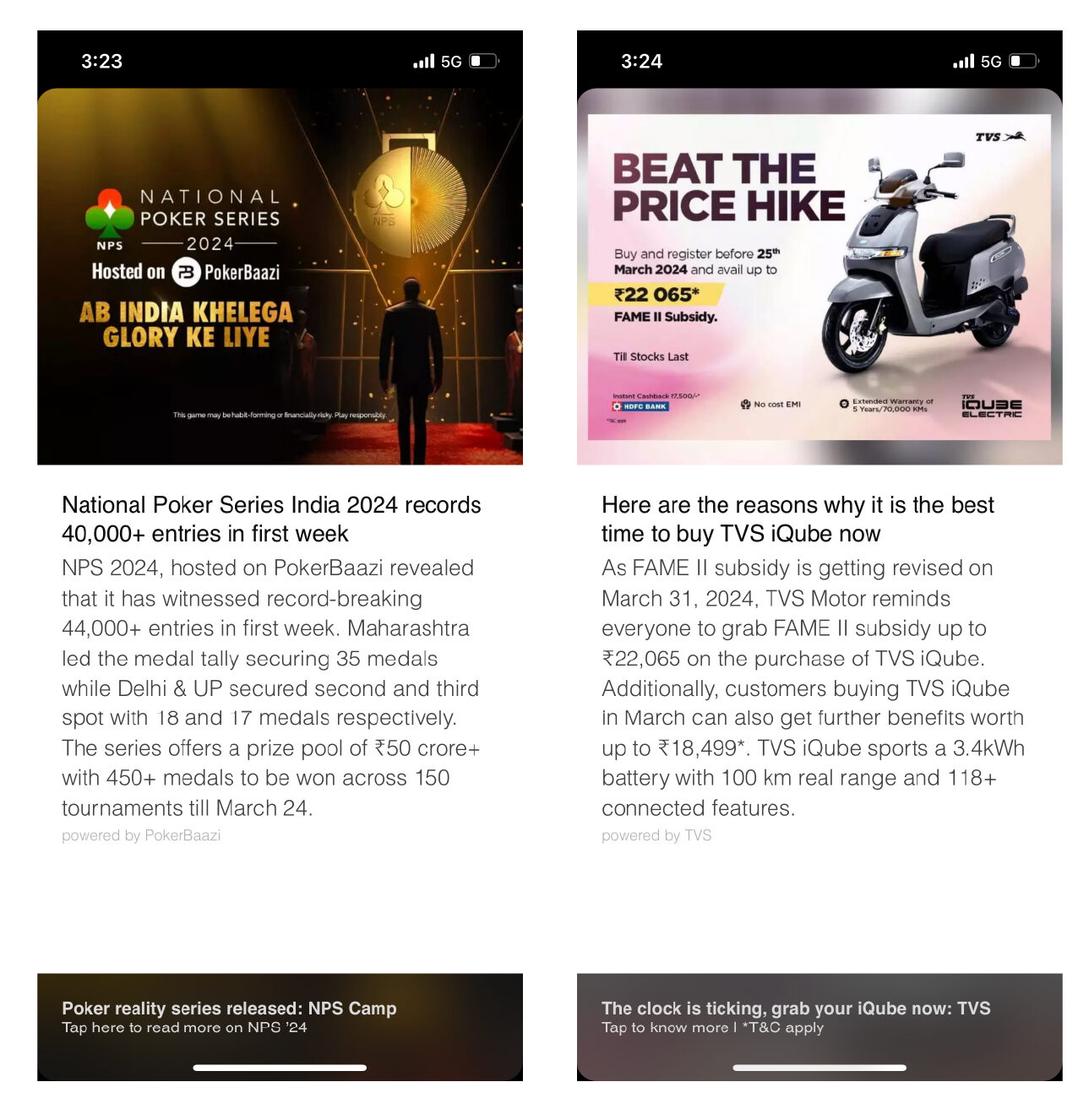
Fast forward to 2024, the cofounder and now chairman said in a video podcast that sponsored posts (which is clearly marked as promoted content) helps the company earn almost double the revenue compared to normal advertisements. He added that losses have flared up due to investments in other products that the company is trying out. Iqubal further said that the core business at Inshorts remains profitable.
But brands would only continue to pay Inshorts if the app retains users or adds more quality users every month. Which is why Inshorts is morphing into a social media platform rather than a news aggregator, but it won’t be easy to bring in influencers without a capital infusion.
Inshorts’ organic and cost-effective approach is a big gamble in the current environment where creator income has also plummeted.
Iqubal believes that stickiness or user retention remains a key metric for any social media app, more than downloads. But retaining users through influencer content while also masquerading as news is a tricky balance, and Inshorts cannot afford to fall short in this regard.
Edited by Nikhil Subramaniam
Update Note: April 18, 2024 | 18:15 PM
- Added details about publishers and publisher bodies challenging the Digital Media Ethics Code in various high courts and the interim stays received in this regard
Update Note: April 29, 2024 | 17:00 PM
- Due to concerns raised by readers and Inshorts, Inc42 has revisited portions around the IT Rules, 2021 for news aggregators. Based on conversations with legal experts, we have clarified language around potential violations of IT Rules, 2021 in relation to Inshorts aggregating social media posts by individual users, which could carry misinformation or half-truths




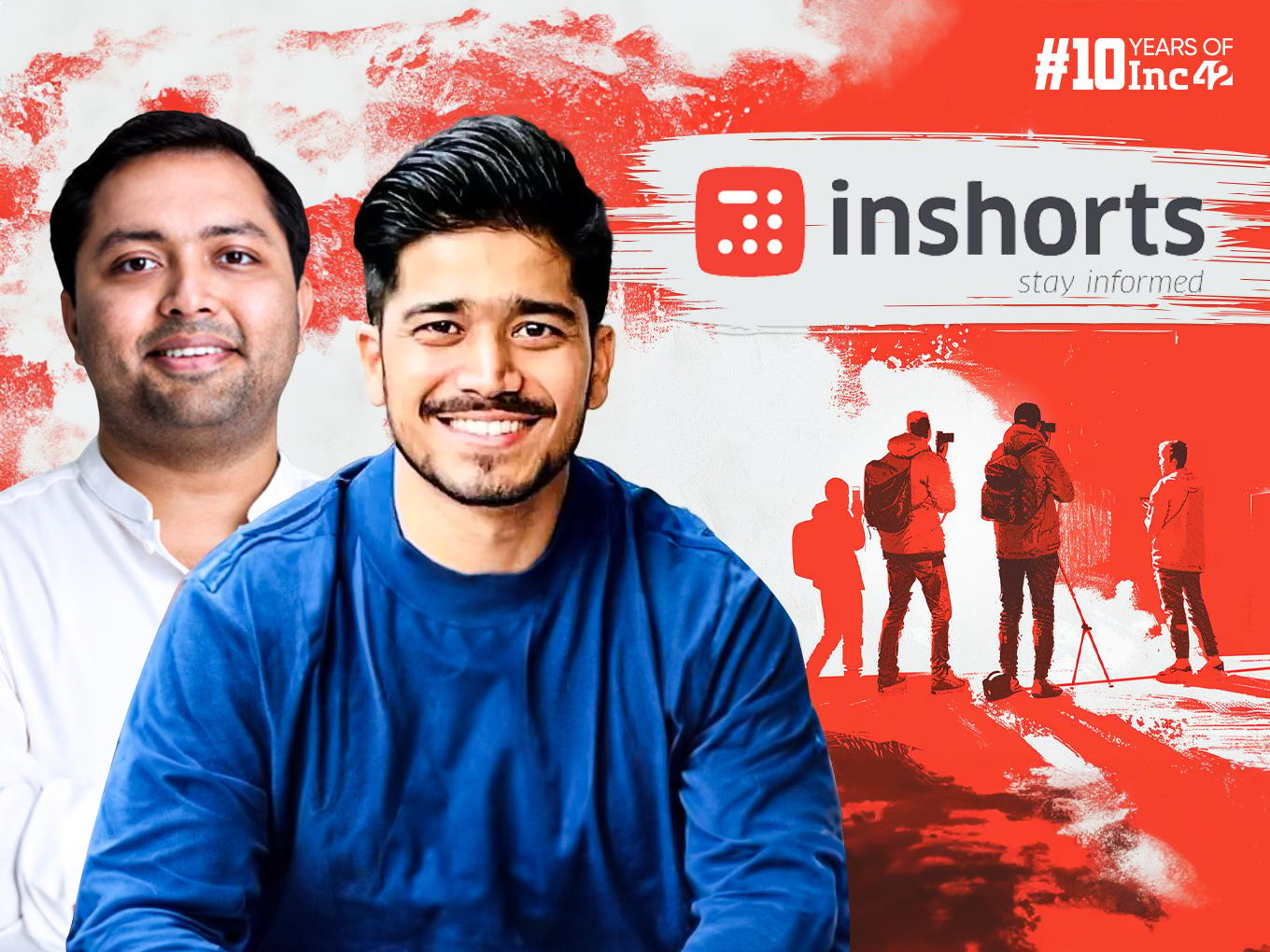



























 Ad-lite browsing experience
Ad-lite browsing experience